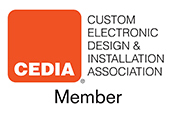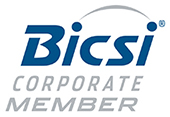Select the Correct Simply45 RJ45 modular plugs
|
Simply45 manufactures several different RJ45 modular plugs in our Pass Through RJ45 Series. As such, we receive many questions regarding RJ45 modular plug selection. Some of these questions include: - What is the difference between each plug? To start with, it is important to understand that a pass through RJ45 modular plug is not performance specific. The LAN cable itself determines the performance capability, not the pass through RJ45 modular plug. Selecting the right Simply45 Pass Through RJ45 modular plug for your LAN cable depends on two things: (1) Diameter of the wire conductors, and (2) Diameter of the LAN cable itself. LAN or Category cables are identified by specific industry performance standards set by ANSI/TIA and ISO/IEC. Cables classified as Cat5e, Cat6, and Cat6a all have different performance standards that these cables must meet. Cable manufacturers have slight construction variations in meeting these performance standards. These differences may include:
These cable brand manufacturing differences must be accounted for by RJ45 manufacturers so that their pass through RJ45 modular plugs properly fit the various sizes and types of LAN cables. |
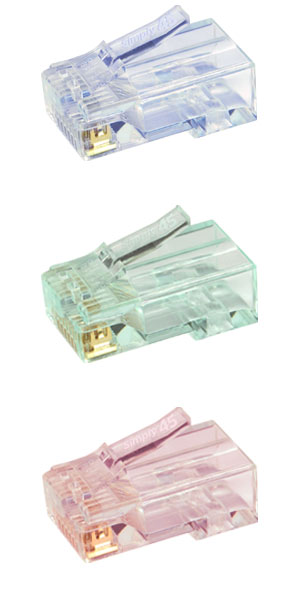 |
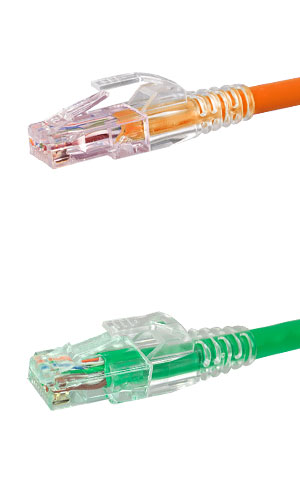 |
Wire Conductor Sizes With pass through RJ45 modular plugs it is important for the separated wire pairs to pass through the plug with some friction or resistance. The slight wire tension when pushed through the wire guide on the front of the plug is important as it helps to securely hold the wires for better wire trims and pin sets. This tension prevents the wires from moving during the wire trim and pin set termination process. Cable Diameter Sizes Next, it is important to match the plug cable entrance (rear/back of plug) to the cable overall diameter. The cable must be securely inserted into the back of the plug.
Multiple Plug Sizes Required To accommodate the various LAN cable construction differences the pass through RJ45 needs to come in a variety of sizes as well. Simply45 tested numerous cable types and cable brands in order to develop the necessary sizes for our pass through RJ45 series. This process re-engineered the pass through RJ45 to include higher quality materials and internal design changes resulting in improved performance and ease of use. |
|
Multiple Plug Sizes Required To accommodate the various LAN cable construction differences the pass through RJ45 needs to come in a variety of sizes as well. Simply45 tested numerous cable types and cable brands in order to develop the necessary sizes for our pass through RJ45 series. This process re-engineered the pass through RJ45 to include higher quality materials and internal design changes resulting in improved performance and ease of use. Simply45 Pass Through RJ45 Modular Plug Series Simply45 makes it very easy to select the right pass through RJ45 by referencing the plugs to the LAN cable typically used for each plug. Then we color coded the plugs and matching packaging to make all of our plugs easier to work with. Part: S45-1500 (Simply45-Cat5e). This RJ45 is typically used for most Cat5e UTP (unshielded) 24 AWG solid cable. It can also be used for other unshielded cables such as Cat5e Stranded, Cat6 Stranded, and Cat6a Stranded. Part: S45-1550 (Simply45-Cat5e-Sh). This RJ45 is typically used for most Cat5e STP (shielded) 24 AWG solid cable. This plug as an internal ground design. It can also be used for other shielded cables such as: Cat5e stranded, Cat6 stranded, and Cat6a stranded. Part: S45-1600 (Simply45-Cat6). This RJ45 is typically used for most Cat6 UTP (unshielded) 23 AWG solid cable. It can also be used for other unshielded cables such as: larger diameter Cat5e. Part: S45-1700 (Simply45-Cat6a). This RJ45 is typically used for larger diameter unshielded Cat6 UTP 23 AWG solid and Cat6a UTP 23 AWG solid cable. This plug features:
More Solutions Coming Soon Simply45 has filed for patent protections on several of our proprietary features included on the above plug series. Additionally, we will be coming out very soon with our Simply45 Pro Series, Cat6 Shielded, and 10G Shielded (Cat6a/Cat7a) pass through RJ45 modular plugs. Patents have recently been filed and production is now underway. We expect to have these items ready for market during 4th Quarter 2019 or early 1St Quarter 2020. |
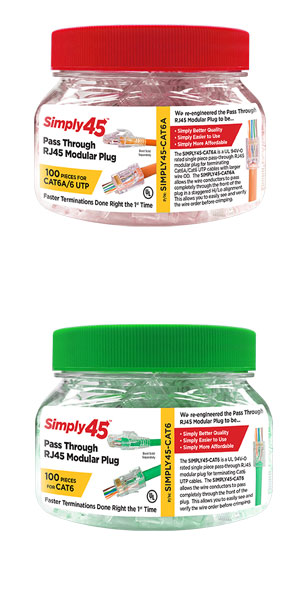 |

